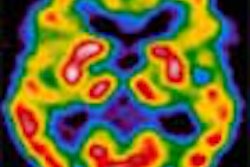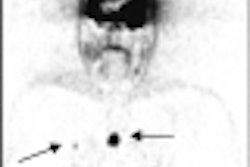Society of Nuclear Medicine, Reston, VA, 2001, $130 for SNM members; $182 for non-members.
Once again, Botvinick and his co-authors have assembled a technically demanding, well-written book. This 396-page self-study program covers the clinical aspects of myocardial perfusion imaging (MPI), a noninvasive procedure that allows the evaluation of both function and perfusion in a single study.
The text begins with an overview of the diagnosis of coronary artery disease, utilizing exercise or pharmacologic stress testing in collaboration with myocardial perfusion imaging. Indications and major advantages for performing exercise testing and imaging are clearly defined to assist the clinician in determining which diagnostic test is most appropriate.
There are various representations and illustrations concerning the sensitivity, specificity, and prognostic value of myocardial perfusion imaging in both men and women. The major clinical advantages of stress perfusion methods are explained. Clinical Aspects presents methods to aid in the determination of the extent of myocardium at risk.
Perfusion image quantification is discussed, specifically quantitative methods, image reproducibility, and visual analysis. An overview of image interpretation is presented, including brief descriptions of the tools required, the various methods to be utilized, the techniques for reporting image findings, and the mix of imaging and clinical findings used to obtain the results.
Valuable information on the extent of risk stratification, prognostic value of MPI, and normal and abnormal scans, is presented in excellent detail. Sections on the events, prognosis, lesion severity, and the cost-effectiveness of using MPI for coronary artery are also clearly laid out. The text describes the use of MPI in specific clinical settings, such as unstable angina, acute chest pain, and possible acute myocardial infarction.
Comparisons are provided on the utilization of rest and stress echocardiography, stress testing and rest perfusion imaging. One section of the book is dedicated to the study of rest perfusion imaging of patients presenting to the emergency department with chest pain. This section lists the advantages and disadvantages of thallium-201, sestamibi, and tetrofosmin.
The reasons for the underestimation of disease on stress perfusion scintigraphy are also examined. The final section of the text includes 32 multiple-choice questions, and case examples with answers and critiques.
The advanced, comprehensive scope of Clinical Aspects establishes it as a key reference for clinicians and technologists aspiring to broaden their knowledge in the field of nuclear cardiology. The authors are to be commended for the effective organization and presentation of complicated subject material in an understandable and logical format.
By Keri WilliamsAuntMinnie.com contributing writer
January 14, 2002
Keri Williams is a registered radiologic technologist and a certified nuclear medicine technologist. She is the supervisor of nuclear medicine at Craven Regional Medical Center in New Bern, NC.
If you are interested in reviewing a book, let us know at [email protected].
The opinions expressed in this review are those of the author, and do not necessarily reflect the views of AuntMinnie.com.
Copyright © 2002 AuntMinnie.com



















